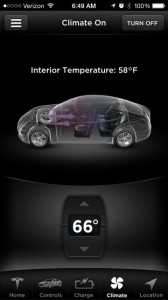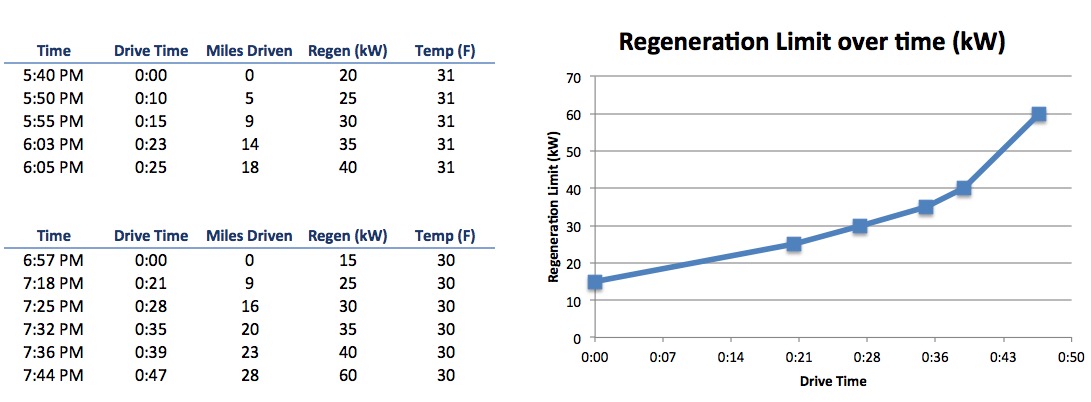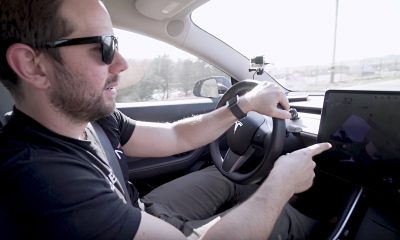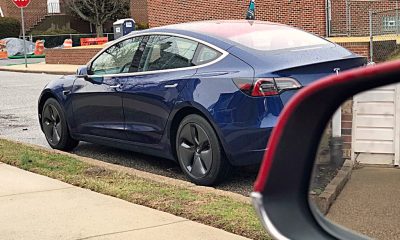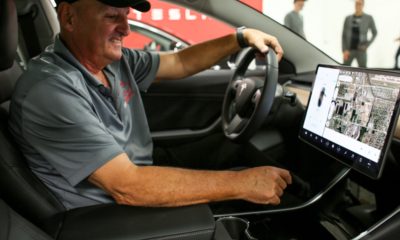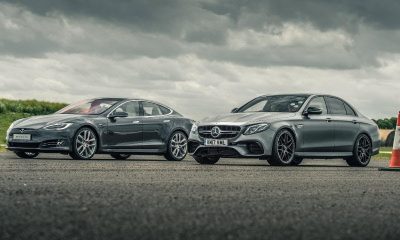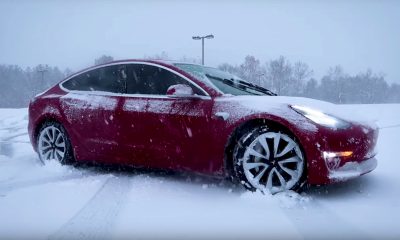News
Effects of Winter on Tesla Battery Range and Regen
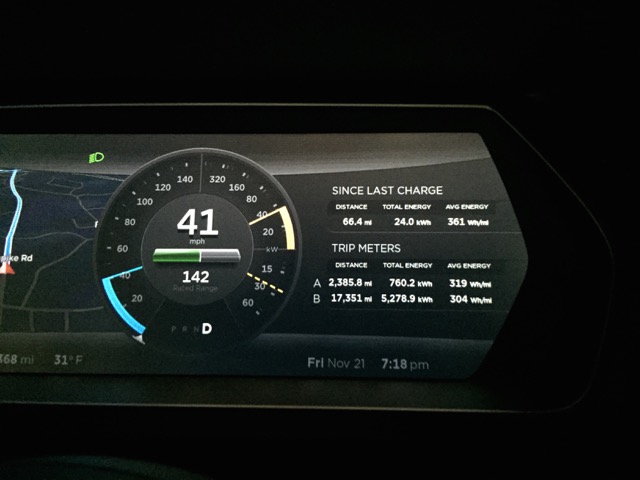
Winter conditions has begun to set in here in New England with temperatures not exceeding the 20’s. Thankfully I’ve already prepared my winter wheels and tires in advance so I’m not overly worried about the potential for snow, however I’m quickly learning the effects of winter on the battery and overall energy efficiency.
Cabin Temperature
The first order of business is making sure I’m comfortable when I get into the car each day. This means preheating the Model S cabin temperature through the Tesla App (if I happen to remember to) or, better yet, have it scheduled to automatically preheat via the VisibleTesla app.
My daily schedule looks something like this: VisibleTesla preheats the car 30 minutes before I enter and while it’s still plugged in from my overnight charge. This ensures I enter a warm car every morning with no affect on my range – the best of both worlds!
Leaving for work at the end of the day, however, is a bit more erratic so I usually use the Tesla App to preheat on an ad-hoc basis. I realize that this preheating will eat into my overall battery range, but I’m not overly concerned because I have plenty of range to spare even with a 100 mile commute each day. It’s well worth it for a little more comfort.
I enjoy turning on the air conditioner during the summer months but getting into a warm car in the dead of winter is even better!
Limited Regenerative Braking
Prior to the winter, the only times I have experienced limited regenerative braking (regen) was directly after performing range charges in anticipations of my Tesla road trip adventures. The Tesla battery does not have the capacity to receive additional energy (when at a 100% state of charge) thus it disables regenerative braking all together.
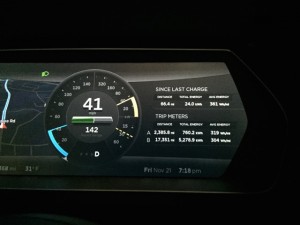 Winter months, however, bring a completely different experience with regen. When the Model S is cold it limits the ability to regen since the batteries need to be at an optimal temperature before it receives any additional charge.
Winter months, however, bring a completely different experience with regen. When the Model S is cold it limits the ability to regen since the batteries need to be at an optimal temperature before it receives any additional charge.
A dashed yellow line appears on the center display indicating that regenerative braking is limited. If you’ve been accustomed to driving with regen on, this new behaviour (with regen disabled) will feel and drive very differently.
I found myself quickly rolling towards the cars in front of me as I instinctively ignored the brakes and assumed that the car would just come to a gradual stop by letting go of the accelerator pedal. That obviously didn’t happen with regen limited. You’ll need to use your brakes so be careful not to “over press” it as you quickly adjust to driving with brakes again.
This winter-induced form of limited regeneration lasts for a very long. I wasn’t sure if the lack of regen was isolated to the weather conditions for that particular day so I decided to log my results over a larger sample of several days.
Here’s what I noticed about the effects of winter on Tesla’s regenerative braking:
- There appears to be a linear easing off of the “regen cap” through the first 30 minutes. At 0 miles, when the car is just started, the amount of regen is capped at 20 kW.
- 25 minutes into my drive, the regen cap is loosened to 40 kW.
As you can see from some of my data points, it took me over 45 minutes of driving (30 miles covered) before the regenerative braking behavior was back to normal — that’s almost my entire drive home!
I’ve been experimenting with various approaches to avoid the regen capping. One of which is timing my overnight charge so that it completes right at the time I’m about to leave for work. This ensures that the batteries are at a good temperature, by the time I begin driving, and with no regen cap in place. Timing it perfectly can be tricky.There’s been a few occasions where my charge completed earlier than expected and as a result the batteries cooled off before I got to drive.Here again VisibleTesla can help, but it’s an area that I wish Tesla would address directly —
add a feature to allow users to specify the END time for a charge as opposed to the start time. The Model S should calculate when charging begins based on the set end time.
I’ve been experimenting with ways to reduce the after-work limited regenerative braking occurrences but since there’s no charging infrastructure at my work, I can’t pre-warm the batteries. I’ve even tried warming up the cabin temperature in advance to see if this would have an impact on regenerative braking but unfortunately it doesn’t.
Higher Energy Use
Cold weather definitely affects energy use on the Model S. My tires, while great for winter, are less efficient — they’re not the low rolling resistance tires that came with the Model S. I’m also using extra energy for warming the cabin (despite my chilly 66 F year-round cabin temperature setting). The Model S is also using extra power when managing the battery temperature.
Prior to winter my average energy consumption was around 300-315 kWh/mi but now I’m averaging 350-365 kWh/mi or approximately 16% more energy used than summer months. I’m also using my brakes more during the winter, as a result of the limited regenerative braking, so that will also introduce more wear and tear.
One piece of advice from Tesla is to use seat heaters to warm yourself up over cabin heat. The seat heaters apply heat directly to your body and thus a more efficient use of energy. If you have your cabin temperature set at 72 F , try reducing it to 68 F and use your seat heaters to warm yourself up.
I’m sure I’ll be uncovering a lot more tips and interesting findings over the next few months especially as the snow storms start blowing in and temperatures dip into single digits! Stay tuned!
Elon Musk
Tesla CEO Elon Musk’s $1 trillion pay package hits first adversity from proxy firm
ISS said the size of the pay package will enable Musk to have access to “extraordinarily high pay opportunities over the next ten years,” and it will have an impact on future packages because it will “reduce the board’s ability to meaningfully adjust future pay levels.”
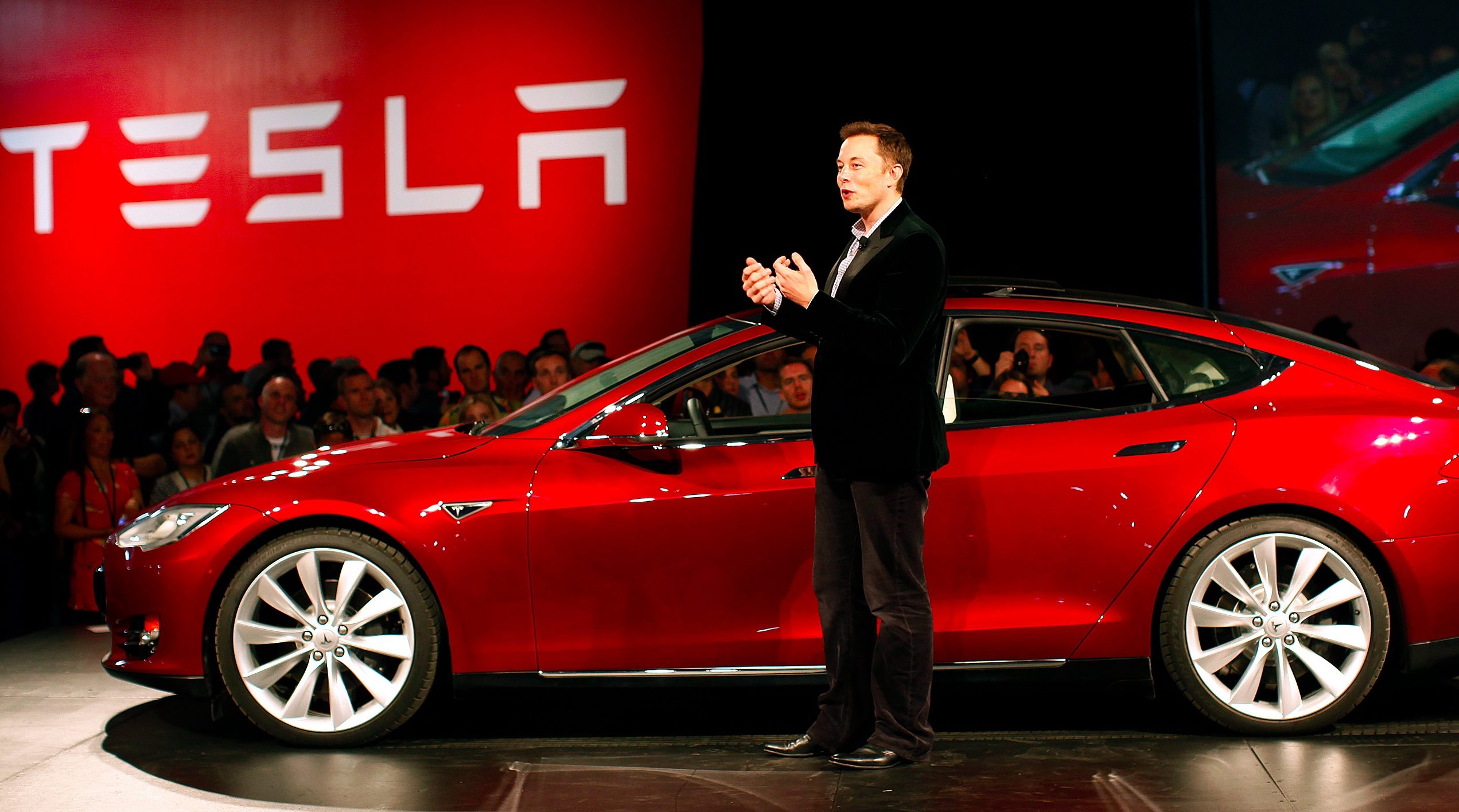
Tesla CEO Elon Musk’s $1 trillion pay package, which was proposed by the company last month, has hit its first bit of adversity from proxy advisory firm Institutional Shareholder Services (ISS).
Musk has called the firm “ISIS,” a play on its name relating it to the terrorist organization, in the past.
“ISIS”
— Elon Musk (@elonmusk) September 27, 2021
The pay package aims to lock in Musk to the CEO role at Tesla for the next decade, as it will only be paid in full if he is able to unlock each tranche based on company growth, which will reward shareholders.
However, the sum is incredibly large and would give Musk the ability to become the first trillionaire in history, based on his holdings. This is precisely why ISS is advising shareholders to vote against the pay plan.
The group said that Musk’s pay package will lock him in, which is the goal of the Board, and it is especially important to do this because of his “track record and vision.”
However, it also said the size of the pay package will enable Musk to have access to “extraordinarily high pay opportunities over the next ten years,” and it will have an impact on future packages because it will “reduce the board’s ability to meaningfully adjust future pay levels.”
The release from ISS called the size of Musk’s pay package “astronomical” and said its design could continue to pay the CEO massive amounts of money for even partially achieving the goals. This could end up in potential dilution for existing investors.
If Musk were to reach all of the tranches, Tesla’s market cap could reach up to $8.5 trillion, which would make it the most valuable company in the world.
Tesla has made its own attempts to woo shareholders into voting for the pay package, which it feels is crucial not only for retaining Musk but also for continuing to create value for shareholders.
Tesla launched an ad for Elon Musk’s pay package on Paramount+
Musk has also said he would like to have more ownership control of Tesla, so he would not have as much of an issue with who he calls “activist shareholders.”
News
Tesla is adding an interesting feature to its centerscreen in a coming update
In a recent dissection of coding, Tesla hacker green noticed that the company is bringing in screenshare with Software Update 2025.38

Tesla is adding an interesting feature to its center touchscreen in a coming update, according to a noted hacker.
In a recent dissection of coding, Tesla hacker green noticed that the company is bringing in screenshare with Software Update 2025.38. Details on the use case are slim, but he said the feature would export the car screen so it could be viewed remotely.
It would bring up a notification on the screen, along with a four-digit pin that would link the two together:
hm, have not noticed at first, but 2025.38 also brings in a “screenshare” service to export the car screen so you can view it remotely (details are unclear yet).
When you do it there’s going to be a notification on the screen. Secured by a super-duper static 4-digits pin…— green (@greentheonly) October 17, 2025
As previously mentioned, the use case is unclear, but there are some ideas. One of which is for remote support, which is something Apple has used to help resolve issues with its products.
Support staff and employees routinely tap into customers’ screens to help resolve issues, so this could be a way Tesla could also use it.
This seems especially relevant with Robotaxi, as the screen might be a crucial part of resolving customer complaints when there is no employee in the car.
Additionally, it seems as if it will not be exclusive to those owners who have newer vehicles that utilize the AMD chip. Intel will get support with the new feature as well, according to what green has noticed in the coding.
Finally, it could also be used with all sorts of content creation, especially as Full Self-Driving videos and what the vehicle sees in Driver Visualization.
As it is released, Tesla will likely release more information regarding what the screensharing mode will be used for.
For right now, many owners are wondering where it could actually work and what advantages it will offer for owners as well as the company itself.
Elon Musk
SpaceX posts Starship booster feat that’s so nutty, it doesn’t even look real
The Super Heavy booster’s feat was so impressive that the whole maneuver almost looked like it was AI-generated.
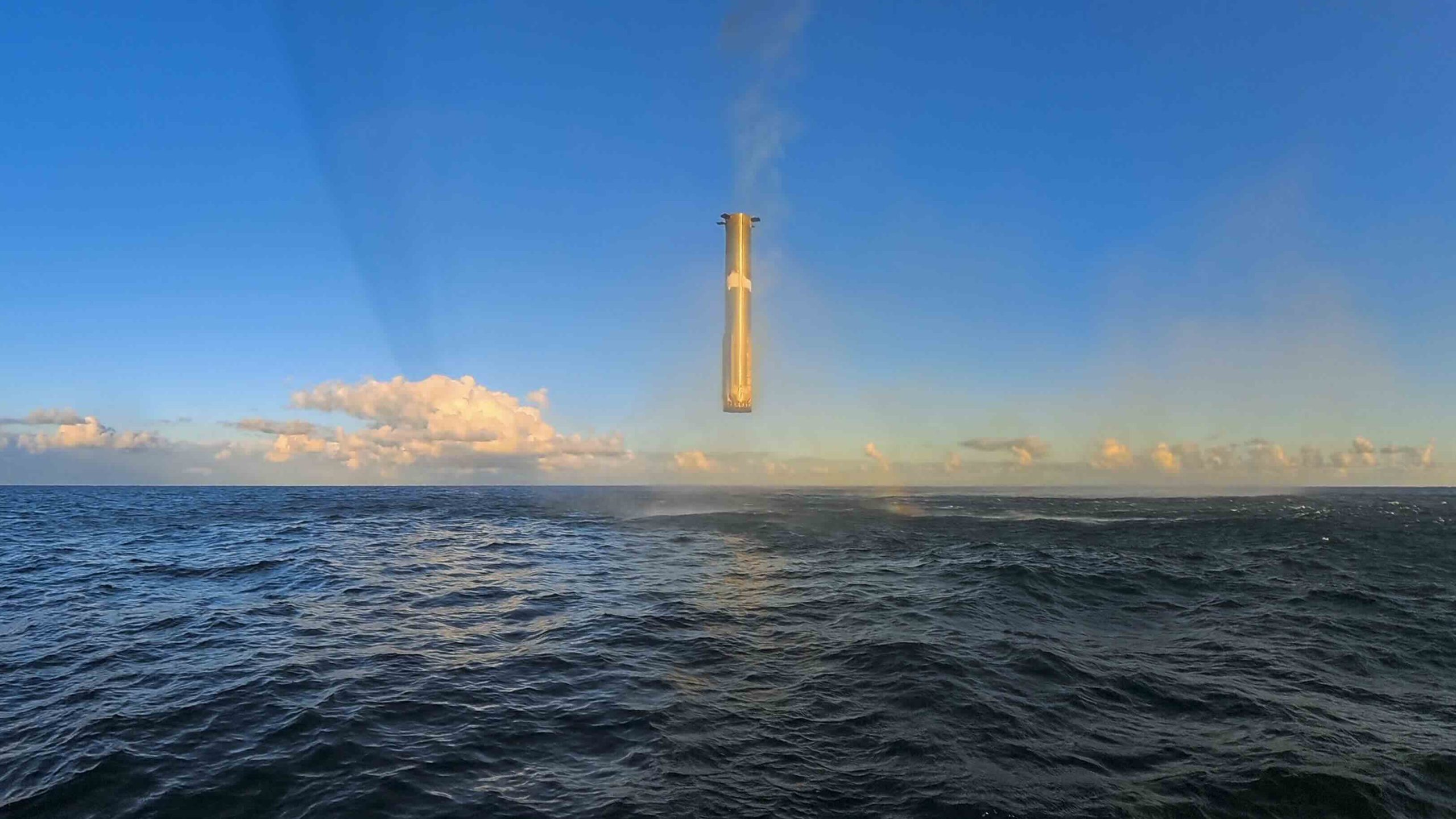
SpaceX has shared a video of a remarkable feat achieved by Starship’s Super Heavy booster during its 11th flight test.
The Super Heavy booster’s feat was so impressive that the whole maneuver, which was captured on video, almost looked like it was AI-generated.
Super Heavy’s picture perfect hover
As could be seen in the video shared by SpaceX, Starship’s Super Heavy booster, which is nearly 400 feet tall, smoothly returned to Earth and hovered above the Gulf of America for a few seconds before it went for its soft water landing. The booster’s picture-perfect maneuver before splashing down all but capped a near-flawless mission for Starship, which is about to enter its V3 era with Flight 12.
The booster’s balance and stability were so perfect that some users on X joked that the whole thing looked AI-generated. Considering the size of Super Heavy, as well as the fact that the booster was returning from space, the hovering display all but showed that SpaceX is dead serious about keeping its dominant lead in the spaceflight sector.
Starship V2’s curtain call
As noted in a Space.com report, Flight Test 11 achieved every major goal SpaceX had set for the mission, including deploying Starlink mass simulators, relighting Raptor engines in space, and executing a stable reentry for both the Starship Upper Stage and the Super Heavy booster. The feat also marked the second time a Super Heavy booster has been reflown, a milestone in SpaceX’s quest to make the entire Starship system fully reusable.
Starship’s V2 vehicle will now give way to the upgraded Starship V3, which is designed for faster turnaround and higher payload capacity. The Starship program is expected to pursue even more aggressive targets in the coming months as well, with Elon Musk stating on social media platform X that SpaceX will attempt a tower catch for Starship Upper Stage as early as spring 2026.
-
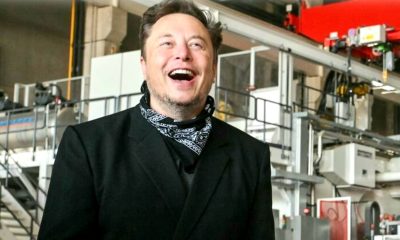
 Elon Musk1 day ago
Elon Musk1 day agoElon Musk was right all along about Tesla’s rivals and EV subsidies
-
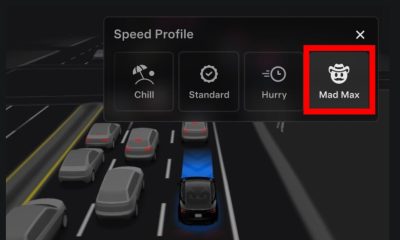
 News2 days ago
News2 days agoTesla launches ‘Mad Max’ Full Self-Driving Speed Profile, its fastest yet
-

 News2 days ago
News2 days agoTesla launches new interior option for Model Y
-
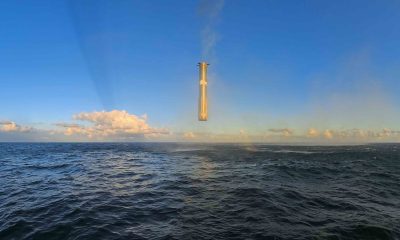
 Elon Musk6 hours ago
Elon Musk6 hours agoSpaceX posts Starship booster feat that’s so nutty, it doesn’t even look real
-
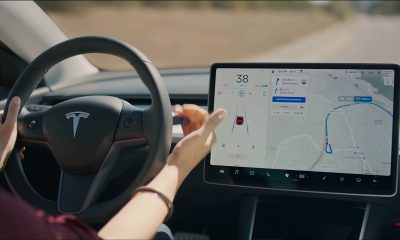
 News1 day ago
News1 day agoTesla widens rollout of new Full Self-Driving suite to more owners
-
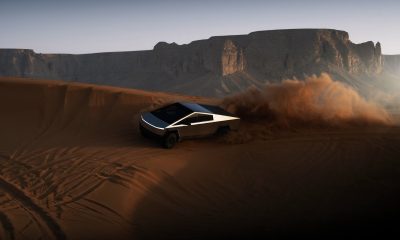
 News2 days ago
News2 days agoTesla makes big move with its Insurance program
-

 News2 days ago
News2 days agoTesla just teased something crazy with the next Full Self-Driving update
-

 News2 days ago
News2 days agoTesla reportedly places large order for robot parts, hinting that Optimus V3 design is all but finalized

